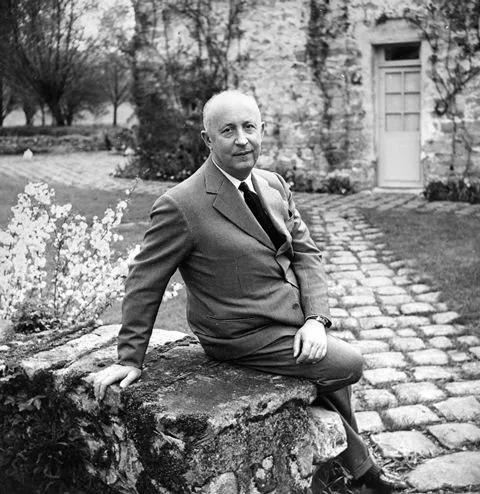
Christian Dior, a name synonymous with luxury, elegance, and timeless fashion, revolutionized women’s fashion after World War II and left a legacy that continues to inspire. Renowned for his groundbreaking “New Look” and unparalleled contributions to haute couture, Dior celebrated femininity and empowered women through his designs. In a world recovering from the austerity of war, his vision of glamour and beauty restored the allure of high fashion, cementing his status as an enduring icon in the industry.
Table of Contents
Early Life and Background
Born on January 21, 1905, in Granville, France, Christian Dior grew up in a prosperous family whose idyllic surroundings and his mother’s love for gardening deeply influenced his artistic instincts. Although his family envisioned a diplomatic career for him, Dior’s passion for art and fashion led him to sketch hats and dresses, defying their expectations. After moving to Paris, he immersed himself in the city’s vibrant art scene, studying political science while exploring galleries and exhibitions—a formative period that paved the way for his future success in the fashion industry.
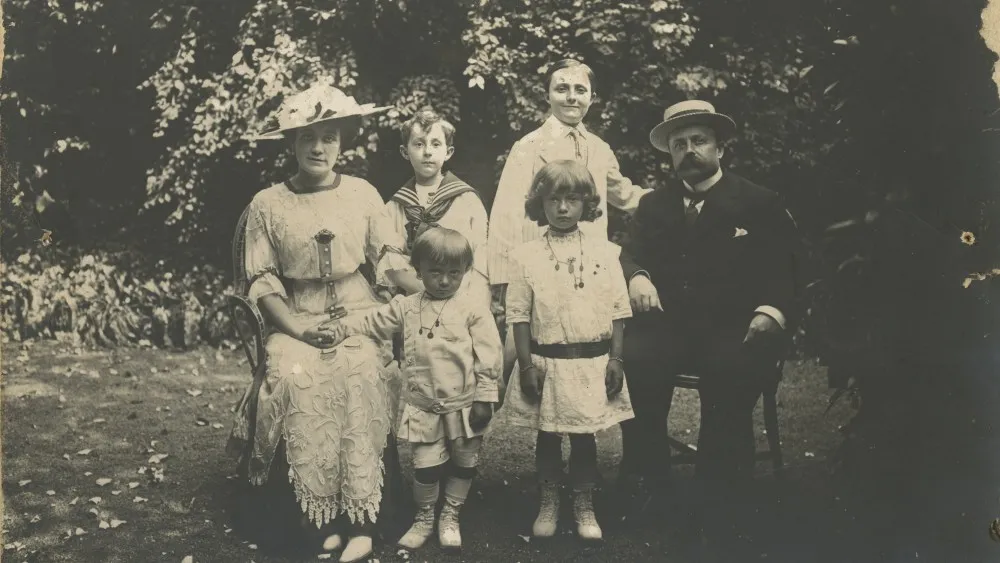
photo/wwd
Dior’s Design Philosophy
Christian Dior’s design philosophy centered on empowering women by celebrating their elegance and individuality. He believed clothing was more than fabric—it was a form of expression that enhanced a woman’s confidence and personality. Known for his architectural approach, Dior crafted iconic silhouettes with structured bodices and flowing skirts that emphasized the natural beauty of the female figure, creating timeless elegance.
A perfectionist, Dior valued detail and craftsmanship, using luxurious fabrics and intricate embroidery to produce pieces of exceptional quality. Inspired by his mother’s garden, he often incorporated floral motifs and soft, natural colors, giving his designs a romantic, organic touch. Blending beauty with functionality, Dior’s creations were as stunning as they were wearable, redefining fashion for generations.
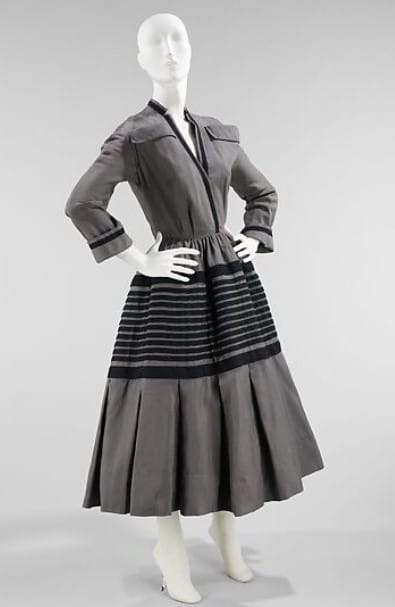
photo/metmuseum
Notable Works & Collections
Christian Dior’s career was marked by a series of groundbreaking collections and designs that have become iconic in the world of fashion. Among his most famous works was the “New Look,” introduced in 1947. This debut collection redefined post-war fashion with its hourglass silhouette, featuring nipped-in waists, padded hips, and full skirts. The Bar Jacket, a structured blazer paired with a pleated skirt, became the centerpiece of this collection and remains one of Dior’s most enduring designs.
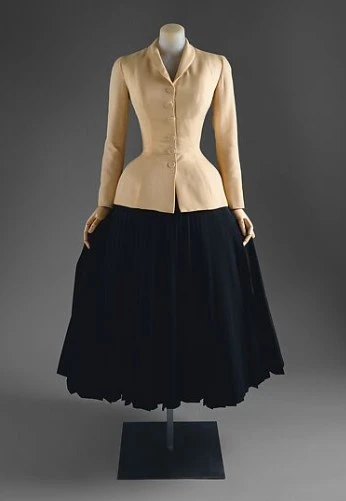
Bar Jacket/photo/metmuseum
Another notable collection was “Corolle,” which showcased Christian Dior’s fascination with floral forms. The dresses in this collection were inspired by the shape and movement of petals, embodying his philosophy of nature-inspired elegance. The collection’s emphasis on luxurious fabrics and detailed craftsmanship elevated haute couture to new heights.
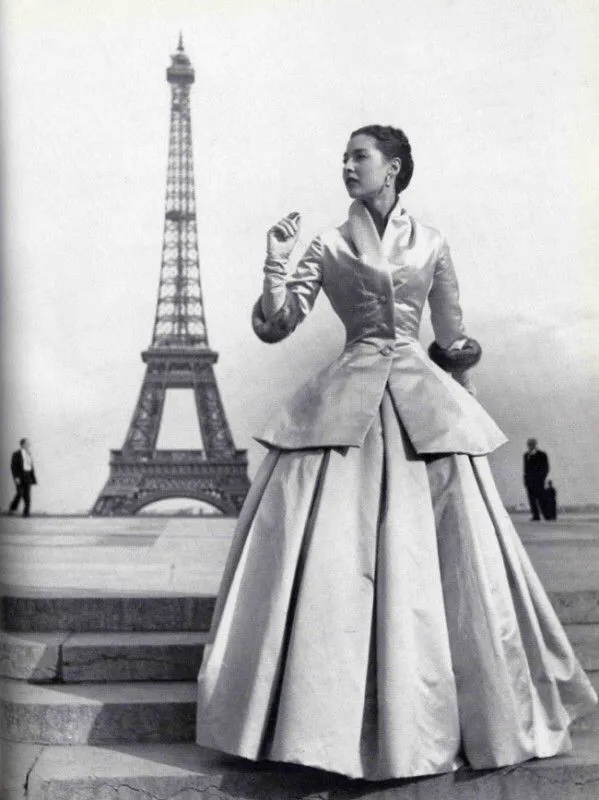
Corolle Dress/photo/pinterest
Christian Dior also made waves with his eveningwear, creating glamorous gowns that became synonymous with Hollywood’s golden age. One such design, the Junon Dress, is a masterpiece adorned with layers of shimmering sequins that resemble a peacock’s feathers. This dress, along with many others, exemplifies Dior’s ability to blend artistry with wearability.
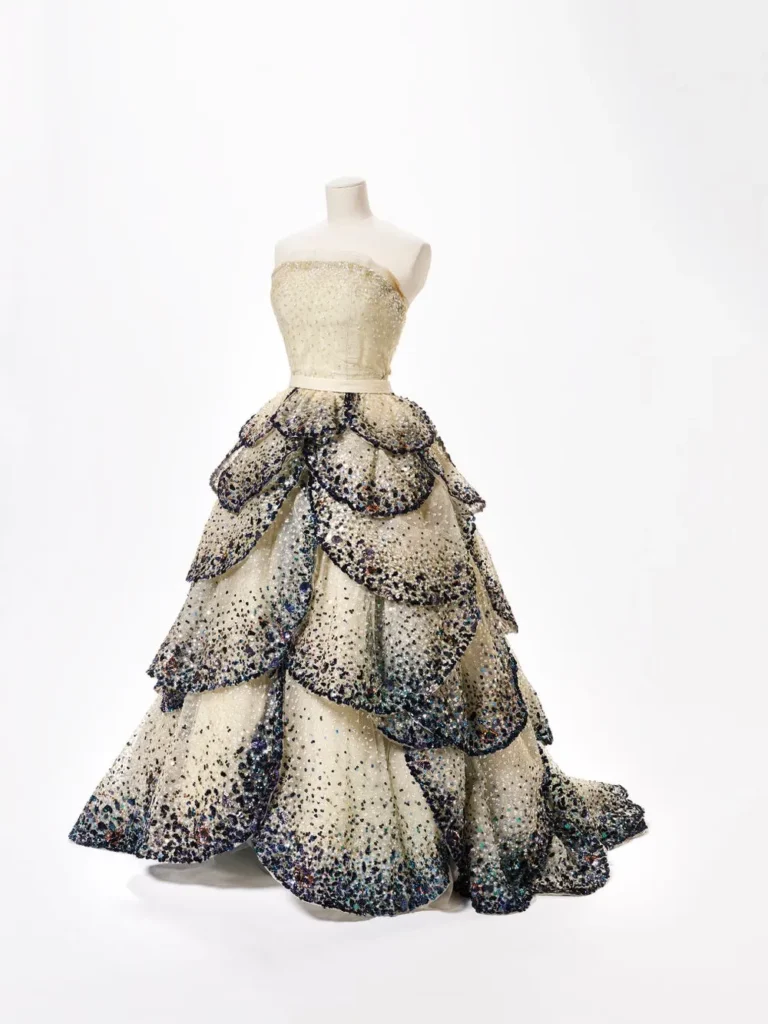
Junon Dress/photo/famsf
Another standout creation was Dior’s first perfume, Miss Dior, launched alongside the New Look collection in 1947. This fragrance became an instant classic, embodying the essence of Dior’s aesthetic: romantic, sophisticated, and timeless.
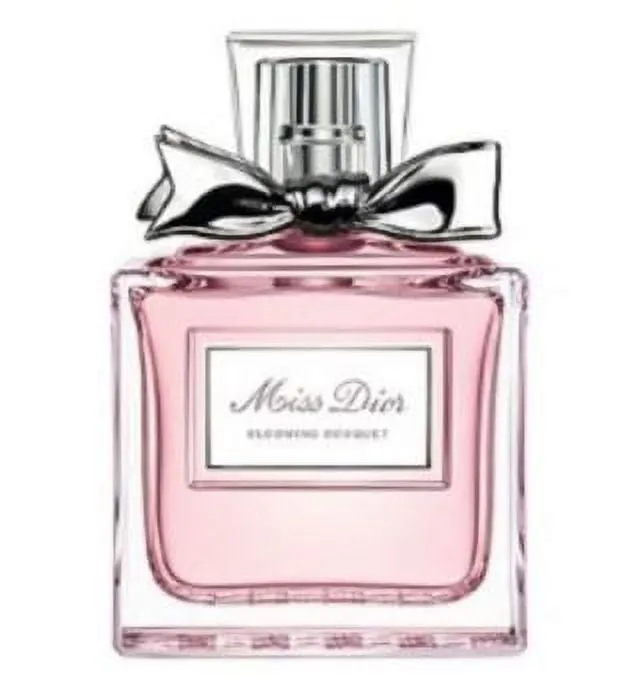
Each collection introduced new innovations, such as the H-Line (1954), which featured streamlined, vertical silhouettes, and the A-Line (1955), which emphasized flared skirts and fitted bodices. These collections showcased Dior’s versatility and willingness to experiment with different forms while staying true to his core philosophy.
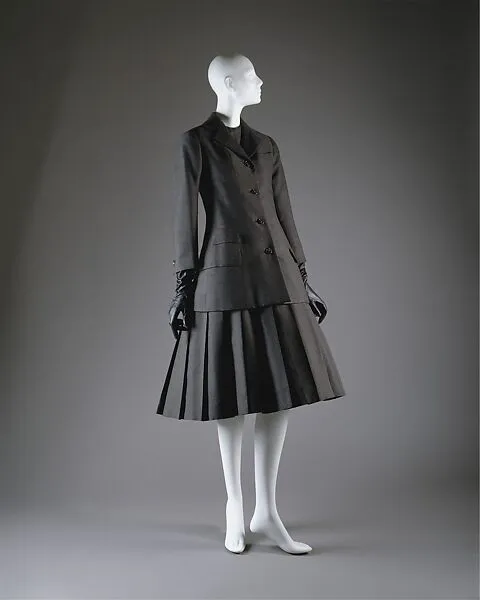
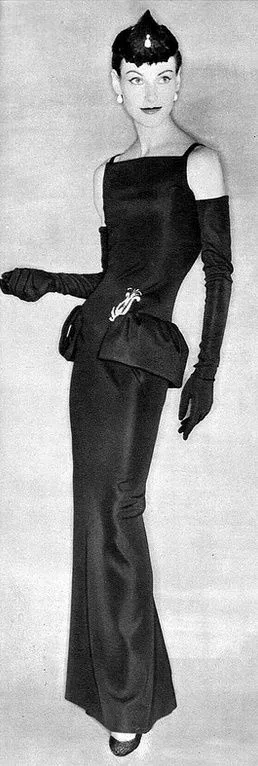
A Line Dress(left)/H Line Dress(right) photo/pinterest/metmuseum
Dior’s notable works extended beyond clothing. His introduction of accessories, such as the iconic Lady Dior handbag and Dior’s luxury shoe line, further solidified the brand’s influence. These items became instant symbols of elegance and are still celebrated today as essential components of the Dior legacy.
Also Read-Jacques Heim: Behind the First Bikini Controversy and Beyond
Path to Fashion Design
Before stepping into the glamorous world of fashion, Christian Dior began his career in the art world. In 1928, he opened an art gallery with a friend, showcasing works by renowned artists such as Pablo Picasso and Georges Braque. This venture gave Dior an invaluable education in visual composition, color, and the transformative power of art. Unfortunately, the Great Depression in the 1930s led to financial difficulties, forcing the gallery to close.
Determined to find a new path, Christian Dior turned to fashion illustration. His sketches of elegant dresses and accessories quickly gained recognition, and he began freelancing for prominent design houses. This marked the beginning of his journey in the fashion industry. In 1938, he joined the esteemed Parisian designer Robert Piguet as an assistant. Under Piguet’s mentorship, Dior refined his design skills and developed an appreciation for simplicity and elegance—qualities that would later define his signature style.
During World War II, Dior worked for Lucien Lelong, another prominent Parisian couturier, designing dresses for the wives of Nazi officers and French collaborators. While the war years were fraught with challenges, they also provided Dior with a unique understanding of how fashion could be both a refuge and a statement in difficult times. By the time the war ended, Christian Dior was ready to step into the spotlight and redefine the world of fashion.
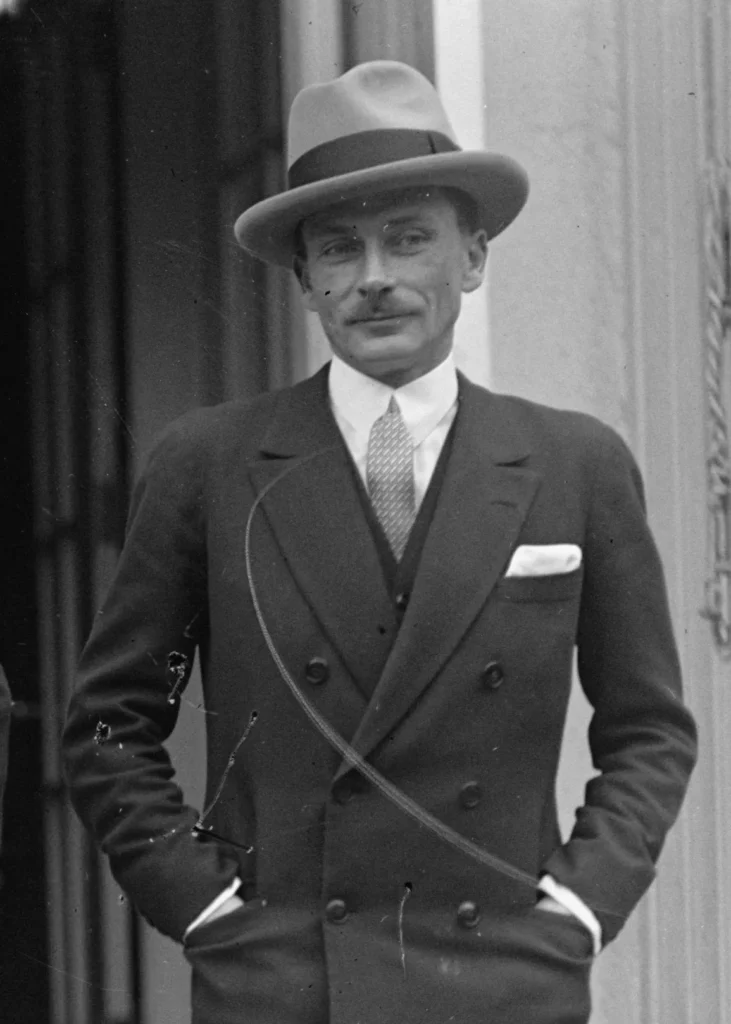
Lucien Lelong photo/wiki
Founding the House of Dior
In 1946, with financial backing from textile magnate Marcel Boussac, Christian Dior founded his eponymous fashion house at 30 Avenue Montaigne in Paris. Dior’s vision for his brand was bold: he wanted to bring back the glamour and femininity that had been absent during the war years. He aimed to create a style that celebrated the female form while embodying luxury, elegance, and modernity.
Dior’s decision to establish his own fashion house was both risky and revolutionary. Post-war Europe was still grappling with economic hardships, and many doubted the viability of a luxury brand. However, Christian Dior believed that beauty and elegance were essential, especially during times of recovery. He surrounded himself with a talented team of artisans and designers, ensuring that every garment produced under his name would meet the highest standards of craftsmanship and artistry.
The opening of the House of Dior marked the beginning of a new era in fashion. Dior’s designs quickly gained attention for their innovation and sophistication, setting his brand apart from competitors. His focus on creating not just clothes but an entire lifestyle made Dior a trailblazer in the world of high fashion.
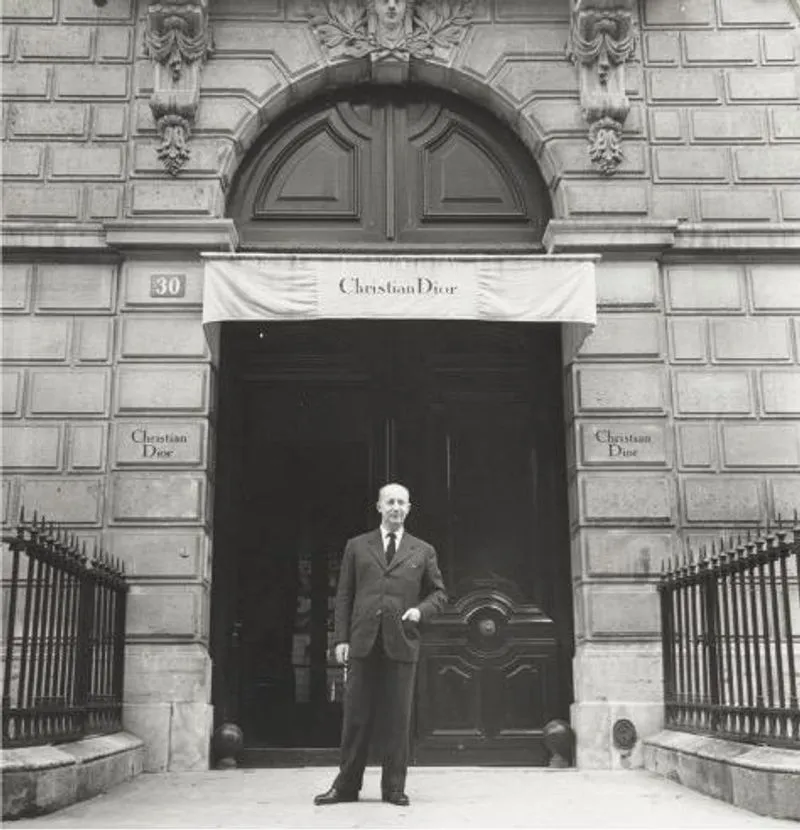
photo/papermagazine
The “New Look” Revolution
The world was forever changed in 1947 when Christian Dior unveiled his debut collection, which became famously known as the “New Look.” The collection featured hourglass silhouettes with cinched waists, padded hips, and voluminous skirts that fell just below the calf. This was a dramatic departure from the utilitarian, boxy styles that had dominated wartime fashion. Women, who had grown accustomed to austerity, were thrilled by this fresh vision of beauty and luxury.
The term “New Look” was coined by Carmel Snow, the editor-in-chief of Harper’s Bazaar, who was awestruck by Dior’s creations. The New Look was not just about aesthetics; it was a statement of optimism and renewal in the aftermath of World War II. Christian Dior believed that women deserved to feel beautiful and glamorous again, and his designs provided an antidote to the drabness of wartime attire.
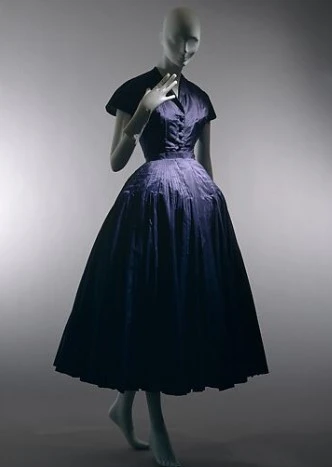
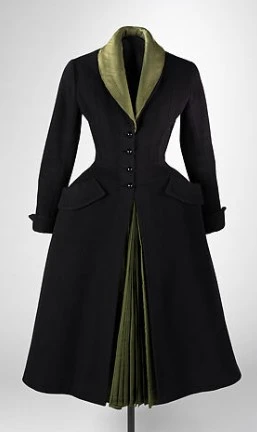
New Look /photo/metmuseum
The New Look was initially met with criticism from some quarters. Feminists argued that the designs were restrictive, while others protested the use of excessive fabric during a time of scarcity. However, these criticisms were overshadowed by the overwhelming popularity of the collection. The New Look became a global sensation, cementing Dior’s reputation as a fashion visionary and revitalizing Paris as the epicenter of haute couture.
Dior’s Legacy in Haute Couture
Christian Dior’s impact on haute couture is nothing short of transformative. At a time when the world was reeling from the effects of World War II, Dior’s creations injected a much-needed sense of beauty and refinement into everyday life. Haute couture had suffered during the war, with many designers closing their ateliers or shifting to more utilitarian designs. Dior’s bold, luxurious approach revitalized the tradition, bringing Paris back to the forefront of global fashion.
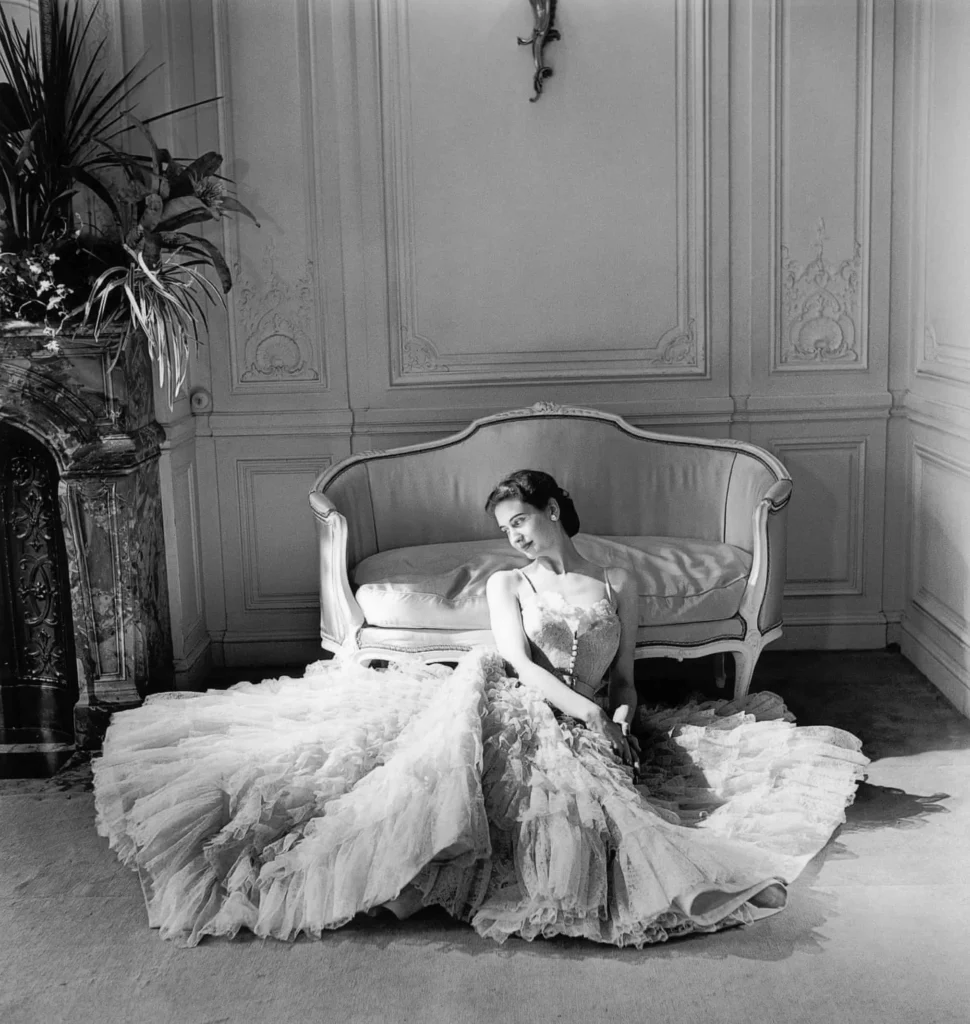
photo/theguardian
His couture collections were characterized by their impeccable attention to detail, showcasing the artistry and skill of his team of seamstresses and artisans. Dior emphasized craftsmanship, ensuring that every garment was a masterpiece. Whether it was the precision of a perfectly tailored jacket or the elegance of a floor-length gown, Dior’s creations exuded sophistication and exclusivity.
Dior also redefined what it meant to be a couturier. He wasn’t just a designer but also a visionary who understood the importance of creating an entire brand identity. From his salons to his runway shows, every aspect of the Dior experience was meticulously curated to reflect his ethos of elegance and innovation. This holistic approach set a new standard in haute couture, influencing how fashion houses operate to this day.
Christian Dior’s Unexpected Death
In 1957, just a decade after launching his iconic brand, Christian Dior passed away suddenly from a heart attack while vacationing in Montecatini, Italy. His death at the age of 52 shocked the fashion world, leaving a void that seemed impossible to fill. Dior was at the peak of his career, having built a global empire and established himself as a household name. His unexpected demise raised questions about the future of the House of Dior and its ability to sustain its success without its founder.
The outpouring of grief from fans, clients, and the fashion community highlighted the profound impact Dior had on the industry. Tributes poured in from around the world, celebrating his extraordinary talent and the legacy he left behind. Although his life was tragically cut short, Dior’s influence on fashion was already deeply ingrained, ensuring that his name would live on.
The Continuation of Dior’s Legacy
After Dior’s passing, the future of the brand rested in the hands of Yves Saint Laurent, who was appointed as the creative director at just 21 years old. Despite his young age, Saint Laurent rose to the challenge, introducing groundbreaking designs that blended Dior’s classic elegance with a modern edge. His “Trapeze Dress,” unveiled in 1958, was a major success, showcasing a more youthful and relaxed silhouette that reflected the changing tastes of the era.
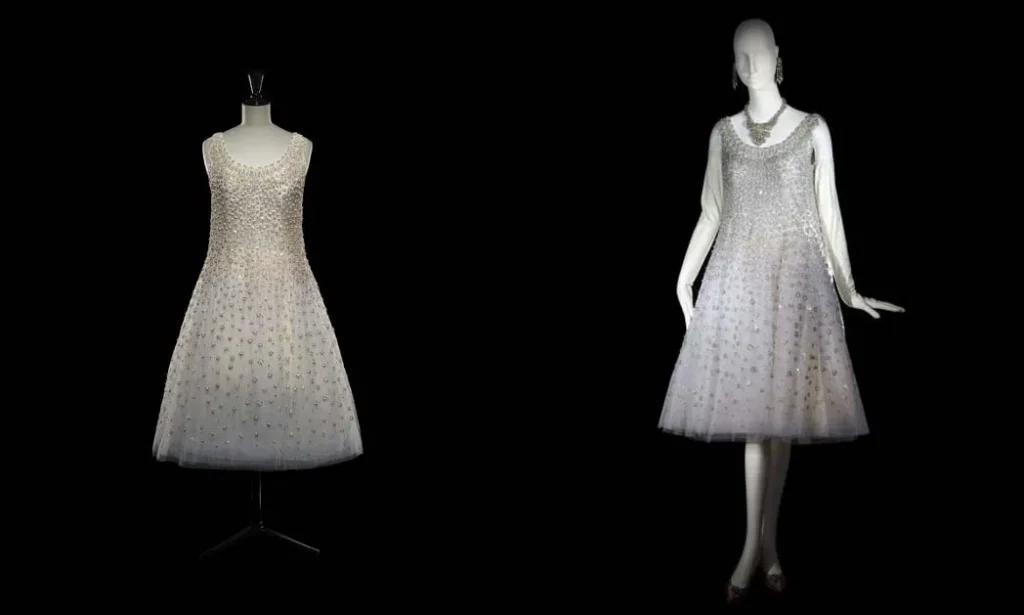
photo/FIT
As the decades passed, other visionary designers took the reins of the House of Dior, each bringing their own unique perspective while staying true to the brand’s heritage. Gianfranco Ferré, known for his architectural approach to fashion, added a touch of boldness to Dior’s collections. John Galliano, with his flamboyant and theatrical style, infused the brand with a sense of drama and fantasy. Raf Simons introduced minimalism and modernity, while Maria Grazia Chiuri, the first female creative director of Dior, has focused on empowering women through her designs.
This seamless transition between creative directors has allowed Dior to evolve while maintaining its status as a symbol of luxury and elegance. Each era of Dior’s leadership has added new dimensions to the brand, ensuring its relevance in an ever-changing fashion landscape.
Dior Today: A Global Powerhouse
Today, Dior stands as one of the most influential and successful luxury brands in the world. With its presence in more than 200 locations globally, Dior is a powerhouse in the realms of fashion, accessories, cosmetics, and fragrances. The brand’s ability to adapt to contemporary trends while honoring its rich heritage is a testament to its enduring appeal.
Under Maria Grazia Chiuri’s leadership, Dior has embraced themes of inclusivity and feminism, addressing the evolving expectations of its clientele. Collections like the “We Should All Be Feminists” line have resonated with modern audiences, demonstrating that Dior is not just a luxury brand but also a platform for cultural commentary.
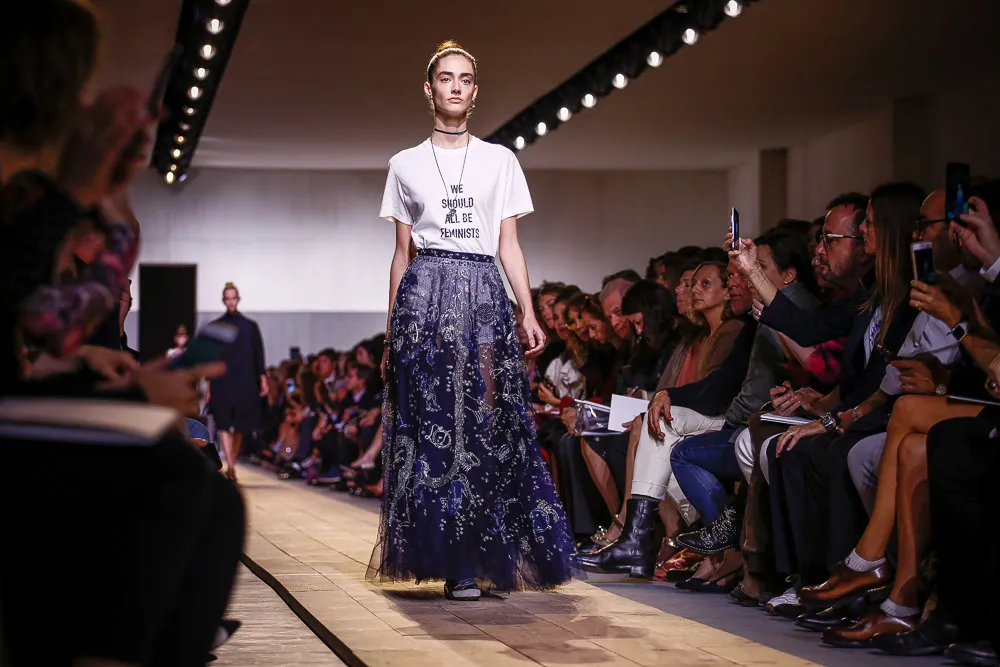
Maria Grazia Chiuri’s We Should All Be Feminists/ photo /vogue
Beyond the runway, Dior has cemented its place in popular culture through collaborations with celebrities and artists. From Natalie Portman’s iconic appearances in Dior campaigns to the brand’s sponsorship of blockbuster events like the Cannes Film Festival, Dior continues to captivate and inspire.
Christian Dior’s Personal Philosophy
Christian Dior’s designs were more than just clothing—they were an extension of his personal philosophy. He believed that fashion was a means of self-expression and that every woman deserved to feel beautiful and confident. His emphasis on elegance and femininity was rooted in his belief that fashion should enhance, not overpower, a woman’s natural beauty.
Dior’s love for nature, particularly flowers, played a central role in his creative process. He often drew inspiration from his childhood garden in Granville, using floral motifs and pastel colors to create collections that were both romantic and timeless. This connection to nature is evident in Dior’s perfumes as well, with fragrances like Miss Dior evoking the freshness and delicacy of a blooming garden.
Dior also believed in the transformative power of fashion. In his view, a well-designed dress could elevate a woman’s mood and confidence, giving her the courage to face the world. This commitment to empowering women remains at the heart of the Dior brand today.
Notable Collaborations and Cultural Moments
Christian Dior’s influence extended far beyond the confines of the fashion world. Over the years, the brand has collaborated with some of the most celebrated photographers, artists, and celebrities, creating iconic moments that have shaped popular culture.
In Hollywood, Dior’s designs have graced the red carpet on countless occasions. Stars like Jennifer Lawrence, Charlize Theron, and Emma Watson have dazzled in Dior gowns, solidifying the brand’s reputation as a go-to for high-profile events. Dior has also played a significant role in film and television, with its designs featured in iconic productions like Breakfast at Tiffany’s and The Crown.
Dior’s partnerships with artists like Andy Warhol and Marc Quinn have further elevated the brand’s cultural significance. These collaborations have resulted in limited-edition collections that blend fashion with contemporary art, showcasing the brand’s commitment to innovation and creativity.
The Timelessness of Dior’s Designs
What makes Christian Dior’s designs so enduringly popular? The answer lies in their timeless appeal. From the iconic Bar Jacket to the New Look dresses, Dior’s creations are celebrated for their ability to transcend trends and remain relevant across generations.
Vintage Dior pieces are highly sought after by collectors and fashion enthusiasts alike, with some items fetching astronomical prices at auctions. This enduring popularity is a testament to the quality and craftsmanship that Dior insisted upon in every piece. His ability to combine traditional techniques with forward-thinking designs ensures that his legacy remains firmly entrenched in the fashion world.
Moreover, Dior’s influence can be seen in the work of countless modern designers who continue to draw inspiration from his groundbreaking vision. Whether it’s the focus on feminine silhouettes or the use of luxurious fabrics, Dior’s impact is evident in fashion collections around the world.
Christian Dior at a Glance:
| Section | Details |
|---|---|
| Introduction | Christian Dior revolutionized post-WWII fashion with the “New Look,” celebrated for its elegance, femininity, and empowerment of women. His designs restored glamour and cemented him as a fashion icon. |
| Early Life and Background | Born January 21, 1905, in Granville, France, Dior grew up in a prosperous family inspired by nature and art. Moving to Paris, he explored the art scene, laying the foundation for his future in fashion. |
| Design Philosophy | Dior believed fashion should empower women and enhance their confidence. Known for structured silhouettes like the Bar Jacket, his designs reflected femininity, elegance, and nature-inspired aesthetics, blending functionality with beauty. |
| Notable Works & Collections | The “New Look” (1947) redefined fashion with its hourglass silhouette. Other notable works include the Bar Jacket, Corolle collection, Junon Dress, Miss Dior perfume, H-Line (1954), and A-Line (1955). Accessories like the Lady Dior bag became enduring symbols of elegance. |
| Path to Fashion Design | Dior began in the art world, running a gallery before moving into fashion illustration. He worked for designers Robert Piguet and Lucien Lelong, honing his skills during WWII and preparing to launch his own brand. |
| Founding the House of Dior | Founded in 1946 with financial backing, the House of Dior aimed to revive glamour post-war. Located at 30 Avenue Montaigne in Paris, it quickly set a new standard for luxury and innovation in fashion. |
| The “New Look” Revolution | Dior’s 1947 collection introduced the “New Look,” featuring cinched waists and voluminous skirts. It symbolized optimism post-war, despite initial criticism for excessiveness. The collection became a global sensation, restoring Paris as the fashion capital. |
| Dior’s Legacy in Haute Couture | Dior revitalized haute couture, emphasizing craftsmanship and luxury. His holistic approach to design elevated the entire fashion experience, inspiring future designers and cementing his influence in the industry. |
| Unexpected Death | Dior died in 1957 at age 52 from a heart attack. The fashion world mourned the loss of a visionary, but his legacy was preserved by successors like Yves Saint Laurent and later creative directors. |
| Continuation of Legacy | Yves Saint Laurent, Gianfranco Ferré, John Galliano, Raf Simons, and Maria Grazia Chiuri have led Dior, each adding innovation while honoring Dior’s heritage. Their leadership has kept the brand relevant and dynamic. |
| Dior Today | Dior remains a global powerhouse in fashion, cosmetics, and accessories, with over 200 locations. Under Maria Grazia Chiuri, the brand has embraced inclusivity and feminism, resonating with modern audiences. |
| Personal Philosophy | Dior valued elegance, believing fashion was a means of self-expression. Inspired by his mother’s garden, he often incorporated floral motifs and natural themes into his designs, reflecting his romantic, timeless aesthetic. |
| Collaborations & Culture | Dior collaborated with artists and graced Hollywood red carpets, dressing stars like Charlize Theron and Jennifer Lawrence. Designs appeared in films like Breakfast at Tiffany’s, showcasing the brand’s cultural influence. |
| Timeless Designs | Pieces like the Bar Jacket and New Look remain iconic, with vintage Dior highly sought after. His influence endures in modern fashion, inspiring contemporary designers with his focus on femininity and craftsmanship. |
Conclusion
Christian Dior’s contributions to the fashion world are unparalleled. From the moment he introduced the New Look in 1947, Dior changed the way women dressed, thought, and felt about fashion. His designs celebrated femininity, elegance, and individuality, offering women a sense of empowerment and sophistication.
Today, Dior’s legacy lives on through the brand’s continued success and its influence on contemporary fashion. As the House of Dior evolves, it remains a beacon of innovation and luxury, embodying the spirit of its founder. Christian Dior’s life may have been tragically short, but his vision and creativity have left an indelible mark on the world of fashion.
FAQs
- What was Christian Dior’s most iconic creation?
The “New Look,” introduced in 1947, is Dior’s most iconic creation. It redefined post-war fashion with its emphasis on feminine silhouettes and luxurious fabrics. - Why is Christian Dior important in fashion history?
Dior revolutionized women’s fashion, bringing glamour and elegance back after the austerity of World War II. His contributions shaped haute couture and established Paris as the fashion capital. - What inspired Dior’s designs?
Dior drew inspiration from nature, particularly flowers, as well as his love for art and his childhood experiences in Granville. - How has the Dior brand evolved over the years?
The Dior brand has evolved through the leadership of various creative directors, each adding their own touch while staying true to the house’s heritage of elegance and innovation. - What is Dior’s impact on modern fashion?
Dior’s emphasis on craftsmanship, femininity, and timeless style continues to influence contemporary designers and remains a benchmark in luxury fashion.
One thought on “Christian Dior: The Man Who Changed the Fashion Forever”